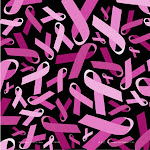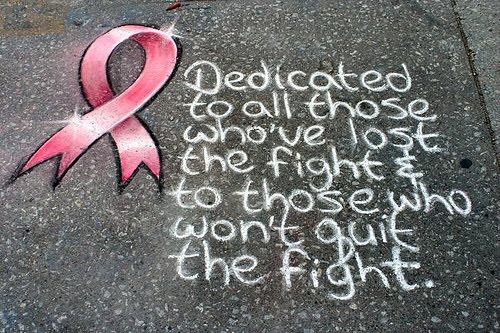Friday, March 5, 2010
Friday, February 26, 2010
last question
Treatment choices by stage
Your treatment options depend on the stage of your disease and these factors:
· The size of the tumor in relation to the size of your breast
· The results of lab tests (such as whether the breast cancer cells need hormones to grow)
· Whether you have gone through menopause
· Your general health
Below are brief descriptions of common treatments for each stage. Other treatments may be appropriate for some women. Clinical trials can be an option at all stages of breast cancer.
Stage 0
Stage 0 breast cancer refers to lobular carcinoma in situ (LCIS) or ductal carcinoma in situ (DCIS):
Stages I, II, IIIA, and operable IIIC
Women with Stage I, II, IIIA, and operable (can treat with surgery) IIIC breast cancer may have a combination of treatments. Some may have breast-sparing surgery followed by radiation therapy to the breast. This choice is common for women with Stage I or II breast cancer. Others decide to have a mastectomy.
Stages IIIB and inoperable IIIC
Women with Stage IIIB (including inflammatory breast cancer) or inoperable Stage IIIC breast cancer usually have chemotherapy. (Inoperable cancer means it cannot be treated with surgery.)
If the chemotherapy shrinks the tumor, the doctor then may suggest further treatment:
Breast-sparing surgery
Radiation therapy instead of surgery
Stage IV
support for women with breast cancer
Learning you have breast cancer can change your life and the lives of those close to you. These changes can be hard to handle. It is normal for you, your family, and your friends to have many different and sometimes confusing feelings.
You may worry about caring for your family, keeping your job, or continuing daily activities. Concerns about treatments and managing side effects, hospital stays, and medical bills are also common. Doctors, nurses, and other members of the health care team can answer questions about treatment, working, or other activities. Meeting with a social worker, counselor, or member of the clergy can be helpful if you want to talk about your feelings or concerns. Often, a social worker can suggest resources for financial aid, transportation, home care, or emotional support.
Friends and relatives can be very supportive. Also, you may find it helps to discuss your concerns with others who have cancer. Women with breast cancer often get together in support groups to share what they have learned about coping with their disease and the effects of their treatment. It is important to keep in mind, however, that each woman is different. Ways that one woman deals with cancer may not be right for another. You may want to ask your health care provider about advice you receive from other women with breast cancer.
Several organizations offer special programs for women with breast cancer. Women who have had the disease serve as trained volunteers. They may talk with or visit women with breast cancer, provide information, and lend emotional support. They often share their experiences with breast cancer treatment, breast reconstruction, and recovery.
You may be afraid that changes to your body will affect not only how you look but also how other people feel about you. You may worry that breast cancer and its treatment will affect your sexual relationships. Many couples find it helps to talk about their concerns. Some find that counseling or a couples' support group can be helpful.
Posted by girls power at 6:12 AM 5 comments
bip bip...new entry coming
Effects of Breast Cancer and Women's Health
By: kevin moshayedi
When a woman is affected with breast cancer, it affects their physical and mental health disproportionately. Breast cancer, can affect a woman's self-image and self-confidence. When she comes to know that she is a victim of breast cancer, she undergoes emotional stress, besides the physical and mental discomforts. Some women undergoes emotional burden when disclosing their diagnosis to loved ones.
All the treatment for breast cancer including surgery, chemotherapy, radiation therapy, immunotherapy, and vaccine therapy, has their own side effects. But women with breast cancer experience more side effects from chemotherapy. According to reports, some breast cancer patients treated with chemotherapy experience congestive heart failure after some months. But the rate of cardiac toxicity is lower with some recently found chemotherapy agents. Women undergoing chemotherapy for breast cancer may experience side effects such as infections, low blood counts, dehydration, nausea, fever, etc. Some may even require hospitalization or emergency department care.
The emotional aspects of this disease are unavoidable. One way to minimize the psychosocial aspect of women undergoing surgery for breast cancer is breast reconstruction. This also provides the benefits of good body image and self-confidence to those patients.
Women with breast cancer should learn how to cope with the disease and the effects of the treatment. Women affected with this breast cancer must be allowed to talk to other women who have beaten breast cancer. They must be introduced to the doctors and experts who have saved many such women. Positive thinking is very important for the long-term survival of cancer patients. Robin Hershkowitz, program director for women's cancers at CancerCare, a national nonprofit support-service group in New York, says "Hope is helpful, even if it doesn't add a second to your life, because it adds to the quality of your life." Recovery of breast cancer depends on the type of treatment, emotional status of the patient, and other related factors. Now-a-days, the medical advances in testing, diagnosis and treatment of breast cancer has relieved many women. The regular breast screening, understanding the prevention options and treatment options are very important for every woman.
Knowledge of breast cancer risk factors makes women undergo mammography for screening, leading to detection of cancers in earlier stages and a resultant improvement in survival rates. The awareness about prevention and early diagnosis of breast cancer makes women more active in their health and in their health decisions. A healthy diet, regular exercise, and a good sleep are also essential for breast cancer patients.
Article Source: http://www.gestbiz.com/articles
Posted by girls power at 5:43 AM 6 comments
Monday, January 18, 2010
the most common breast cancer SYMPTOMS
Breast cancer is a disorder in which malignant or cancer cells are formed in the breast tissues of women. This is a heterogeneous disease which is found to be different in different women and the symptoms too vary accordingly. Women are advised to have themselves medically examined completely at least once in six months. You can even make yourselves aware of the symptoms of breast cancer and contact the physician immediately if you should notice any at any point of time. Prevention is better than cure; here in this case early detection of the condition will help in faster cure. By knowing the symptoms you can regularly examine yourself for the incidence of breast cancer.
Main Symptoms of Breast Cancer
- In most cases the initial symptom which can be noted would be a lump either on the breast itself or in the armpit. This would be easily noticeable and the patient would be able to find it herself. The lump would feel little thicker than the other tissues of the breast. If this is noticed, whatever be the cause, it is advisable to contact the doctor for an examination.
- There might also be a change in shape and size of the breast. Though changes in the size and shape of the breast might also be due to increase or decrease in body weight and shape, this would be more evident and easily noticeable.
- Skin dimpling is also a symptom which is noted in many cases.
- Another common symptom that can be noticed is inversion of the nipple. The nipple might look as if it is dumped inside. This would really change the shape of the breast itself making it look very odd.
- Pain as a symptom, however, cannot be relied upon as it might also be due to some other medical conditions related to breast.
- When dermal lymphatics are invaded by the cancer cells, there might be lump formation over the breast also causing inflammation and burning of the nipples. Pain, redness and swelling might also accompany the condition with a change in the skin texture. This might resemble the texture of orange and this condition is referred to us as ‘peau d’orange’.
- Paget’s disease of the breast is another stage in which there might be severe itching, burning and pain. Though these are the common symptoms, these need not necessarily be the only ones.
by:www.breastcancersymptoms.us
Posted by girls power at 10:34 AM 20 comments
Sunday, January 17, 2010
breast cancer in Malaysia
ONE MILLION afflicted women, almost 45% of those women live in developing countries
The early detection and getting appropriate medical attention can help save lives. So it is unfortunate in Malaysia that nearly 40% of the new cases identified each year were already in the very advanced stages of the disease.
Posted by girls power at 7:06 PM 14 comments
Sunday, January 3, 2010
holla eveybody...
just want to say .."good monink" ..hihi(^_^)peace!!~~
just thinking my scredule today..hahha..me n my friend, ess claz, eating2 n the last one is huhahuha..(wasting tyme..hihi~~!!>>
this evening..
the letter 4 etiketz..
checkup the teks n bla...bla..bla...
n...i want to publish this picture,...
outing2...shot2 games..i'm realy like it!!!~~
Posted by girls power at 6:24 PM 1 comments
Friday, January 1, 2010
here we are



Posted by girls power at 7:58 AM 2 comments








